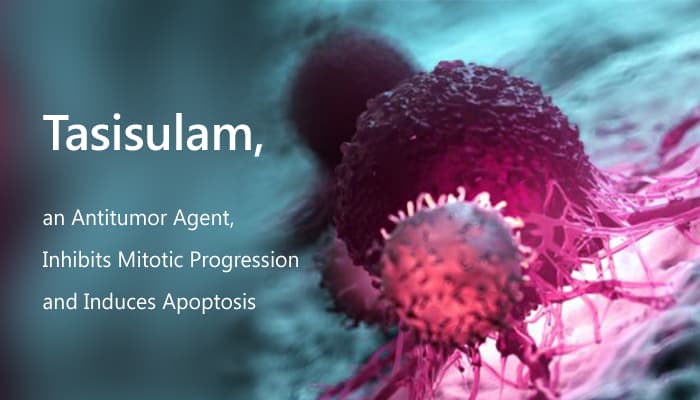Tasisulam is an acyl sulfonamide with a unique antitumor dual mechanism of action. It involves antiangiogenesis and mitotic inhibition. Tasisulam has a broad range of activity in 60 tumor cell lines. It includes leukemia, melanoma, non-small-cell lung cancer, colon, ovarian, renal, and breast cancers. In this study, Tasisulam is an anticancer agent and induces apoptosis via the intrinsic pathway, resulting in cytochrome c release and caspase-dependent cell death. Moreover, Tasisulam inhibits mitotic progression and induces vascular normalization.

Tasisulam is an anticancer agent and induces apoptosis, which also inhibits mitotic progression and induces vascular normalization.
On the one hand, Tsisulam results in cytochrome c release and caspase-dependent cell death. Meanwhile, Tasisulam inhibits the growth of a wide range of tumor histologies. It has more than 70% of the 120 cell lines tested displaying an antiproliferation EC50 of less than 50 μM. Fluorescence-activated cell sorting (FACS) analysis of Calu-6 and A-375 cell lines showed that Tasisulam induces concentration-dependent increase in 4N DNA. In conclusion, It shows that Tasisulam affects cell cycle. Furthermore, Tasisulam causes apoptosis in cells with increased DNA content. Tasisulam inhibited endothelial cell proliferation. In addition, Tasisulam inhibited VEGF-, fibroblast growth factor (FGF)- and epidermal growth factor (EGF)-induced cords in a concentration-dependent manner, with EC50s of 47, 103, and 34 nM, respectively.
On the other hand, Tasisulam at both 25 and 50 mg/kg causes a significant reduction in hemoglobin content and mean blood vessel density by immunohistochemical labeling of Matrigel plugs. Furthermore, Tasisulam shows similar antitumor efficacy across a range of in vivo xenografts. It includes colorectal (HCT-116), melanoma (A-375), gastric (NUGC-3), leukemia (MV-4-11), pancreatic, and multiple tumor grafts of widely varying histology.
Overall, Tasisulam induces tumor cell apoptosis as a result of G2-M accumulation, while simultaneously normalizing tumor vasculature. It is an antitumor agent that Inhibits mitotic progression and induces vascular normalization.
Reference:
Meier T, et al. Mol Cancer Ther. 2011 Nov;10(11):2168-78.